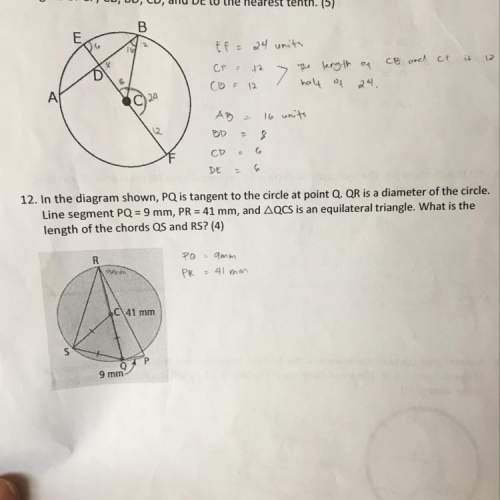
Mathematics, 25.10.2020 01:30 tristanf123
At wind speeds above 1000 centimeters per second (cm/sec), significant sand-moving events begin to occur. Wind speeds below 1000 cm/sec deposit sand and wind speeds above 1000 cm/sec move sand to new locations. The cyclic nature of wind and moving sand determines the shape and location of large dunes. At a test site, the prevailing direction of the wind did not change noticeably. However, the velocity did change. Sixty-three wind speed readings gave an average velocity of x = 1075 cm/sec. Based on long-term experience, σ can be assumed to be 245 cm/sec.
(a)
Find a 95% confidence interval for the population mean wind speed at this site. (Round your answers to the nearest whole number.)
lower limit
cm/sec
upper limit
cm/sec
(b)
Does the confidence interval indicate that the population mean wind speed is such that the sand is always moving at this site? Explain.
No. This interval indicates that the population mean wind speed is such that the sand may not always be moving at this site.
Yes. This interval indicates that the population mean wind speed is such that the sand may not always be moving at this site.
Yes. This interval indicates that the population mean wind speed is such that the sand is always moving at this site.
No. This interval indicates that the population mean wind speed is such that the sand is always moving at this site.


Answers: 3


Another question on Mathematics

Mathematics, 21.06.2019 15:00
Listed in the table is the percentage of students who chose each kind of juice at lunchtime. use the table to determine the measure of the central angle you would draw to represent orange juice in a circle graph
Answers: 3

Mathematics, 22.06.2019 00:00
Aspacecraft can attain a stable orbit 300 kilometers above earth if it reaches a velocity of 7.7 kilometers per second. the formula for a rocket's maximum velocity v in kilometers per second is vequalsminus0.0098tplusc ln upper r, where t is the firing time in seconds, c is the velocity of the exhaust in kilometers per second, and r is the ratio of the mass of the rocket filled with fuel to the mass of the rocket without fuel. find the velocity of a spacecraft whose booster rocket has a mass ratio of 20, an exhaust velocity of 2.1 km/s, and a firing time of 15 s. can the spacecraft achieve a stable orbit 300 km above earth?
Answers: 3

Mathematics, 22.06.2019 00:30
How many doughnuts are equal to 20 cookies.? 3 apples = 5 bananas6 cookies = 7 apples2 doughnuts = 1 banana
Answers: 2

Mathematics, 22.06.2019 02:00
Ineed on the last 8 questions for this homework i’m trying to get all this done by tuesday when i got to my level 5 teacher if i have passed my tabe
Answers: 1
You know the right answer?
At wind speeds above 1000 centimeters per second (cm/sec), significant sand-moving events begin to o...
Questions


Mathematics, 12.11.2020 19:40

Biology, 12.11.2020 19:40

History, 12.11.2020 19:40

English, 12.11.2020 19:40




Physics, 12.11.2020 19:40

World Languages, 12.11.2020 19:40

English, 12.11.2020 19:40

Social Studies, 12.11.2020 19:40

Mathematics, 12.11.2020 19:40



History, 12.11.2020 19:40

Business, 12.11.2020 19:40

Mathematics, 12.11.2020 19:40





